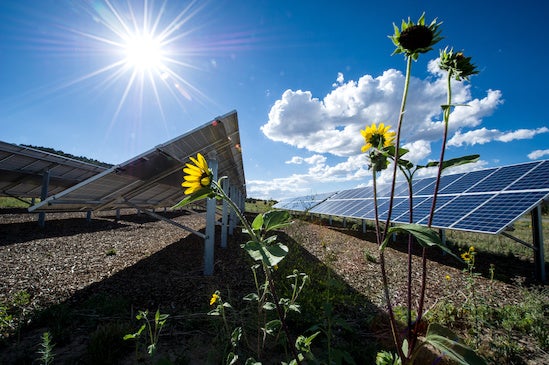That said 2013 has been a great year for solar with
some dynamic shifts in the U.S. and the world. So here are some of the
biggest solar energy news stories to cap off a great year in almost no
particular order.
Perhaps the biggest solar story of 2013 is the continued, anticipated
growth of solar into 2014. Earlier in December numerous analysts and
ratings services anticipated that demand for new photovoltaic solar
power alone could reach up to 49 gigawatts in 2014.
That’s according to a recent forecast by NPD Solarbuzz, the most
bullish. NPD anticipated that growth would be 30 percent higher than the
more than the 36 gigawatts installed in 2012. Other companies have
forecast up to 43 gigawatts of installed solar by the end of 2014.

This next one goes hand in hand with the first. There’s a dramatic shift in where solar power
is going. For the past decade or so the solar market has been dominated
by Europe, and within Europe, Germany and to a lesser extent Italy and
Spain. That’s changed. In 2014 the solar market will be led by
installations in China, Japan and the U.S. While the U.S. is anticipated
to install more than 5 gigawatts of solar in 2014, even bigger is China, which is anticipated to install more than 12 gigawatts of solar in 2014.
In 2013 fully five countries have surpassed the 10 gigawatts of PV threshold. With the U.S. joining the ranks of Germany, Italy, China, and Japan. Meanwhile the whole world surpassed 100 gigawatts of installed solar PV power.
And with more than 40 gigawatts expected to come online in 2014. The
world could surpass the 200 gigawatt level as soon as 2016 if the trends
continue—as they’re expected to.
This will be boosted as the cost of solar continues to come into parity—price equality—with other energy sources. And it’s already happening.
Earlier in 2013 then Department of Energy Secretary Steven Chu said
that solar power started to come into parity Italy and Spain in 2012 and
he projected that it would come into parity in Brazil in 2013.
Meanwhile Deutsche Bank said India, China and the U.S. were also closing
ion on parity in more places in 2013.
Thus far most of these have focussed on the Phttp://www.blogger.com/blogger.g?blogID=5187650006751563316#editor/target=post;postID=6222588246574070036V aspect of solar. But
2013 also saw some significant progress for concentrating solar power
(CSP), too. Perhaps the most significant event in that spectrum of solar
power was the completion and commissioning of Abengoa Solar’s 280 megawatt Solana
solar thermal trough CSP system with thermal energy storage. When it
came online in October it was the world’s largest CSP system and the
largest solar system with energy storage allowing it produce clean
energy after dark.
Big projects make headlines but smaller, rooftop scaled solar
projects made headlines in 2013, too. At least the policies surrounding
them did. In the U.S. utilities in a number of states where rooftop
solar is growing increasingly popular chief among them Arizona, California and Colorado
net-metering policies and reimbursements for customer-generated solar
energy have come under fire from utilities. The utilities are
increasingly concerned that distributed generation is challenging their
traditional business models and charge that other consumers are paying
for solar customers. Solar advocates and solar installers
have come out against these efforts in droves, protesting at utility
headquarters, state capitols and utility commissions. Thus far proposed
cuts and reductions to net-metering hasn’t been disastrous to the solar
industry in these states however.
In other states, solar is set to boom even more. Perhaps the best
example of this is Massachusetts. The tiny eastern seaboard state
reached 250 megawatts of solar earlier this year—that’s four years
earlier than planned. While the state could have rested on those
laurels, it didn’t. In May Gov. Deval Patrick (D) announced that the
state’s new solar goal would be 1.6 gigawatts by the end of the decade.
The original article was published on Solar review's
No comments:
Post a Comment